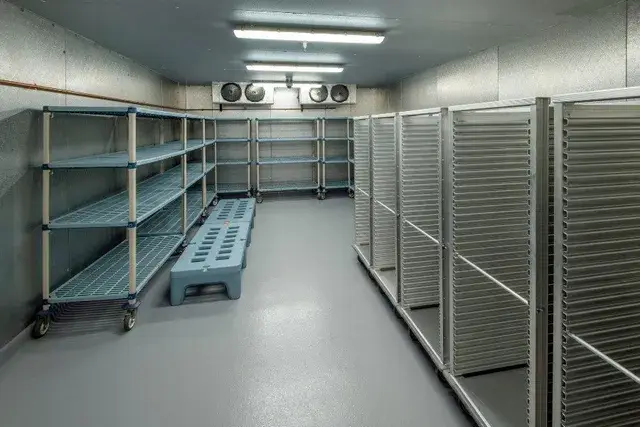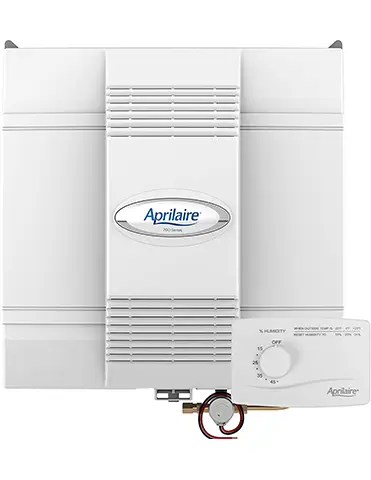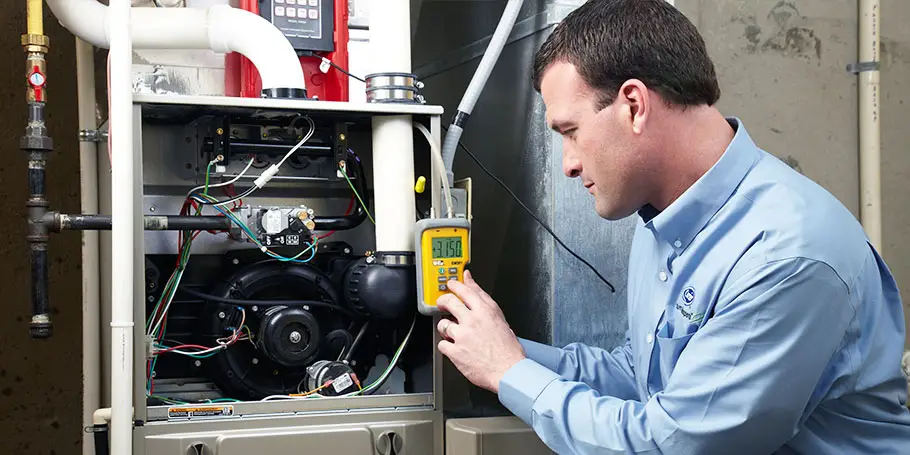A walk-in cooler not cooling properly can disrupt business operations, especially in industries where preserving perishable goods is critical. Understanding the common walk-in cooler problems and troubleshooting effectively can help restore functionality and prevent costly repairs. Below, we outline the top reasons why your walk-in cooler is not cooling properly and provide walk-in cooler repair tips to resolve these issues.

Common Reasons Your Walk-In Cooler Is Not Cooling
1. Incorrect Thermostat Settings
Issue: If the thermostat is set to the wrong temperature, the cooler may fail to maintain proper cooling.
Solution: Verify that the thermostat is set to the correct temperature. If the settings are correct but the cooler still doesn’t cool, the thermostat might be malfunctioning and require replacement.
2. Power Supply Issues
Issue: Electrical problems, such as tripped circuit breakers, blown fuses, or loose connections, can disrupt power to the cooler.
Solution: Check all electrical connections, circuit breakers, and fuses. Ensure the cooler is receiving adequate power and address any issues promptly.
3. Dirty Condenser Coils
Issue: Dirty or blocked condenser coils hinder heat dissipation, reducing cooling efficiency.
Solution: Clean the condenser coils regularly using a soft brush or vacuum to ensure proper heat exchange and cooling performance.
4. Condenser Fan Malfunction
Issue: A faulty condenser fan can impair heat dissipation, affecting the cooling process.
Solution: Inspect the fan for damage or mechanical issues. Replace it if necessary to restore proper cooling.
5. Frosted or Dirty Evaporator Coils
Issue: Frost or dirt buildup on evaporator coils restricts airflow and reduces the unit’s ability to absorb heat.
Solution: Regularly clean and defrost the evaporator coils to maintain optimal cooling efficiency.
6. Low Refrigerant Levels
Issue: Insufficient refrigerant due to leaks or improper charging can compromise the cooling system.
Solution: Contact a certified technician to check for refrigerant leaks, recharge the system, and ensure the refrigerant is at the correct level.
7. Damaged Door Seals
Issue: Worn-out or damaged door seals allow warm air to enter, increasing the workload on the cooling system.
Solution: Inspect door seals for wear and replace any damaged seals to ensure a proper airtight seal.
8. Compressor Problems
Issue: The compressor is essential for circulating refrigerant and maintaining temperature. Compressor motor failure, electrical issues, or wear can cause cooling problems.
Solution: Have a qualified technician diagnose and repair compressor-related issues promptly.
9. Faulty Thermistor or Temperature Sensor
Issue: Malfunctioning thermistors or sensors provide inaccurate readings, leading to improper cooling.
Solution: Replace faulty sensors to ensure accurate temperature control.
10. Ice Buildup
Issue: Excessive ice buildup on components like evaporator coils restricts airflow and reduces efficiency.
Solution: Regularly defrost the cooler to prevent ice buildup and maintain airflow.
Walk-In Cooler Troubleshooting Tips
Step 1: Check the Basics
- Ensure the power supply is working.
- Verify thermostat settings and adjust as needed.
Step 2: Inspect Key Components
- Clean condenser and evaporator coils.
- Examine the door seals for wear or damage.
Step 3: Address Ice Buildup
- Defrost the cooler and inspect for causes of frost, such as a faulty defrost system.
Step 4: Monitor Refrigerant Levels
- Look for signs of leaks and have a technician recharge the system if needed.
Step 5: Listen for Noises
- Unusual sounds may indicate compressor or fan issues that require professional repair.
Step 6: Schedule Professional Maintenance
- Regular servicing by qualified technicians ensures that the system operates efficiently and extends its lifespan.
Commercial Refrigeration Maintenance: Key to Avoiding Cooling Problems
Routine maintenance is essential for preventing commercial cooler issues. Here’s how to keep your system in top condition:
- Clean coils and replace filters regularly.
- Check refrigerant levels and inspect for leaks.
- Ensure proper airflow and ventilation.
- Schedule professional inspections at least twice a year.
Overheating can result from:
– Blocked airflow due to dirty coils or ice buildup.
– Fan or compressor failure, which limits heat dissipation.
– High ambient temperatures affecting the cooler’s efficiency.
Prevention: Regular cleaning, proper ventilation, and timely component repairs can prevent overheating.
– The compressor makes loud or unusual noises.
– The cooler fails to reach or maintain the desired temperature.
– Refrigerant leaks are detected.
– The compressor frequently cycles on and off.
Tip: Addressing compressor issues early can prevent costly repairs or system failure.
The cost of walk-in cooler repair depends on the issue’s complexity. Minor fixes like replacing door seals or cleaning coils are more affordable, while major repairs like compressor replacement can be expensive. To minimize costs:
– Perform regular maintenance.
– Address small issues promptly before they escalate.
– Invest in quality components and professional servicing.
Conclusion
A walk-in cooler not cooling can significantly impact your business, but many problems are preventable with regular maintenance and timely repairs. From checking thermostat settings to addressing compressor issues, understanding these common walk-in cooler problems and following troubleshooting steps can help restore functionality quickly.
For persistent issues or major repairs, consult a professional to ensure your cooler operates efficiently and reliably. With proper care, you can minimize downtime, reduce repair costs, and maintain optimal performance in your commercial refrigeration system.




